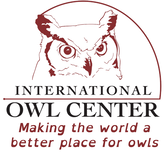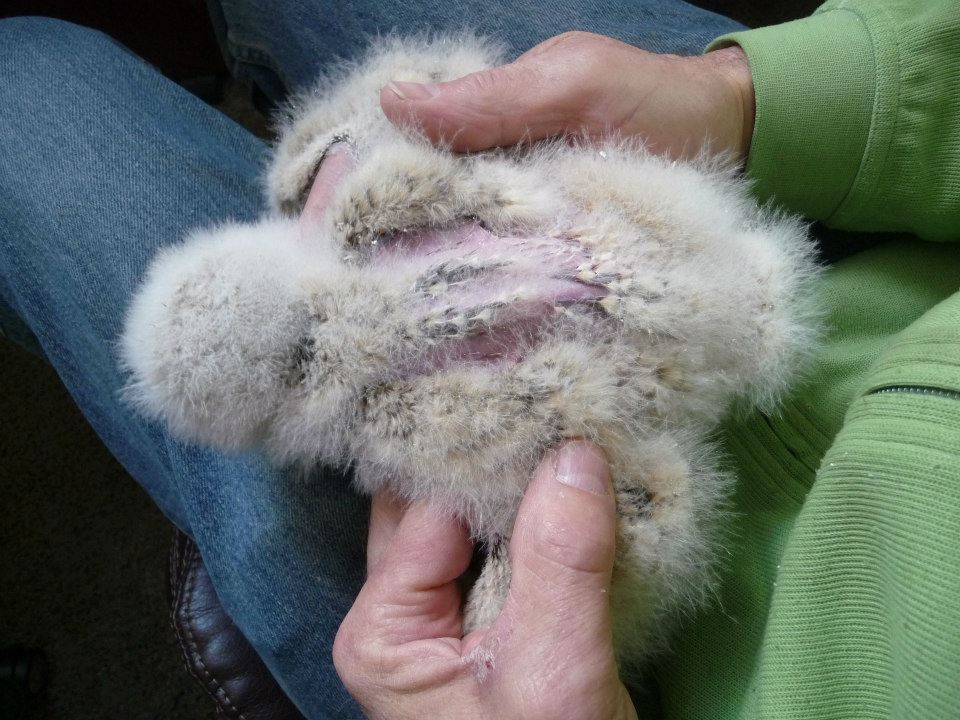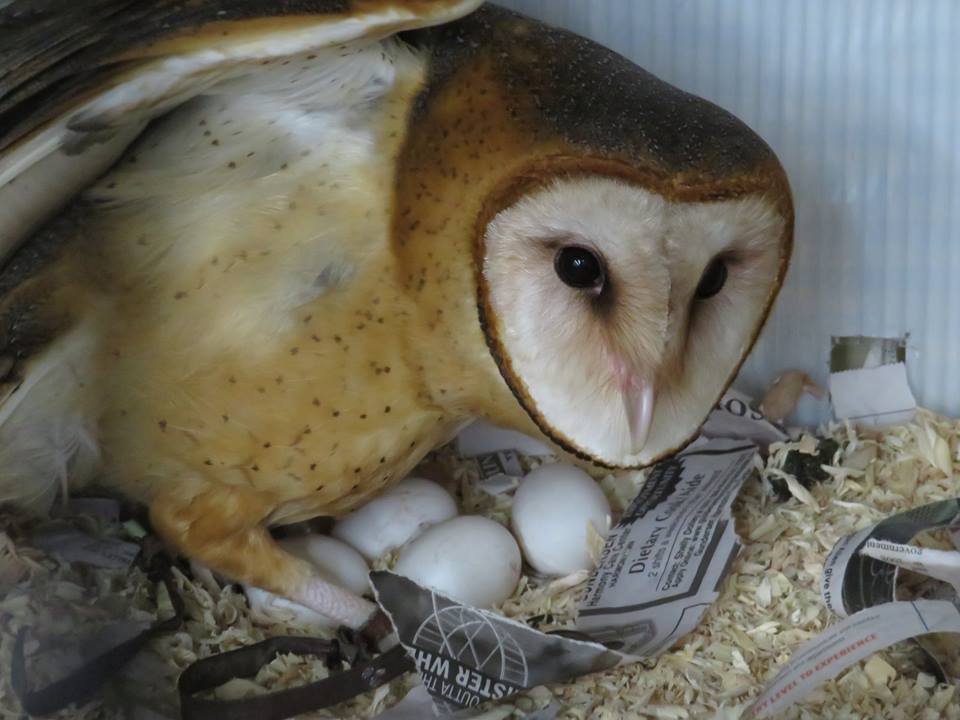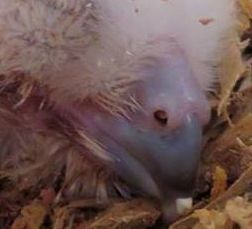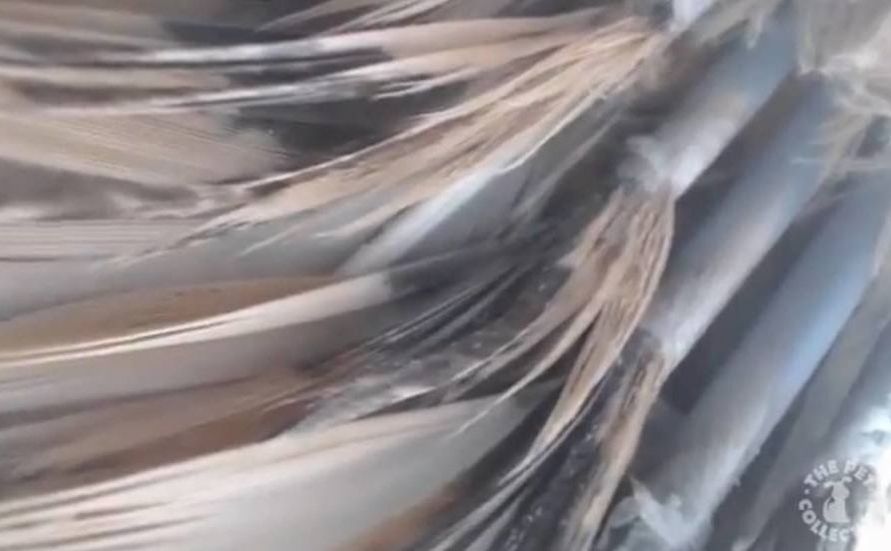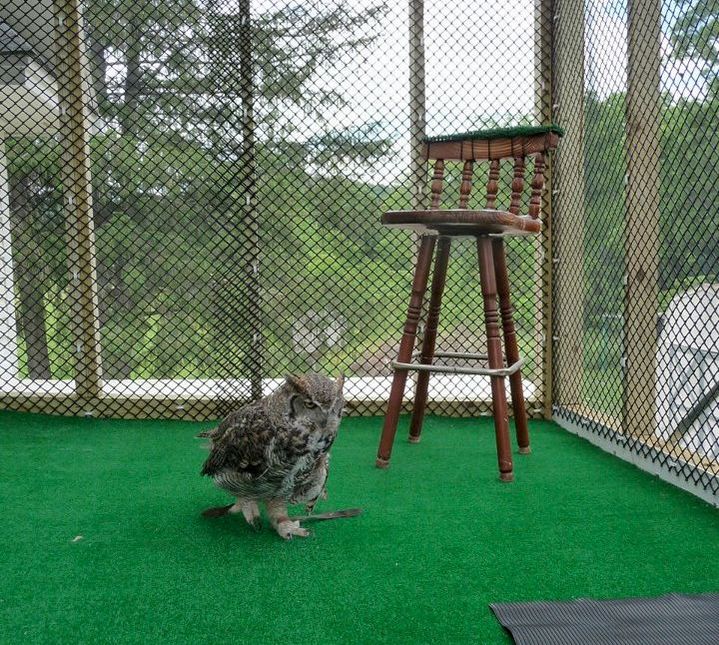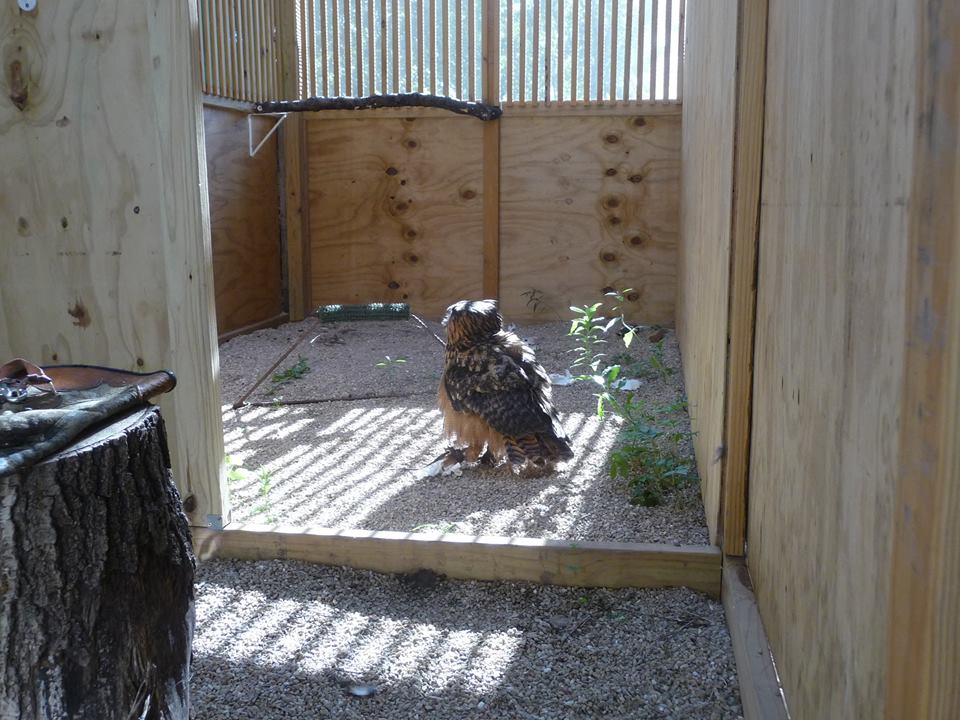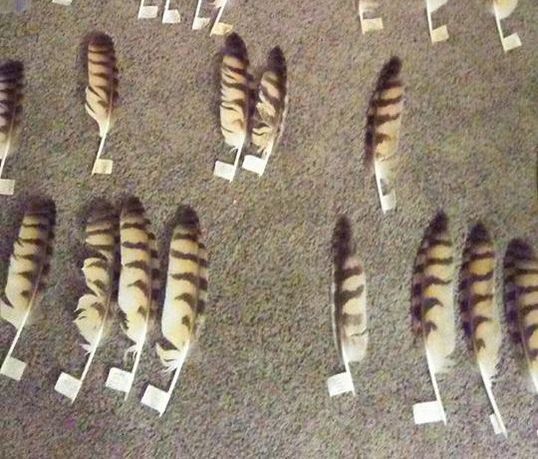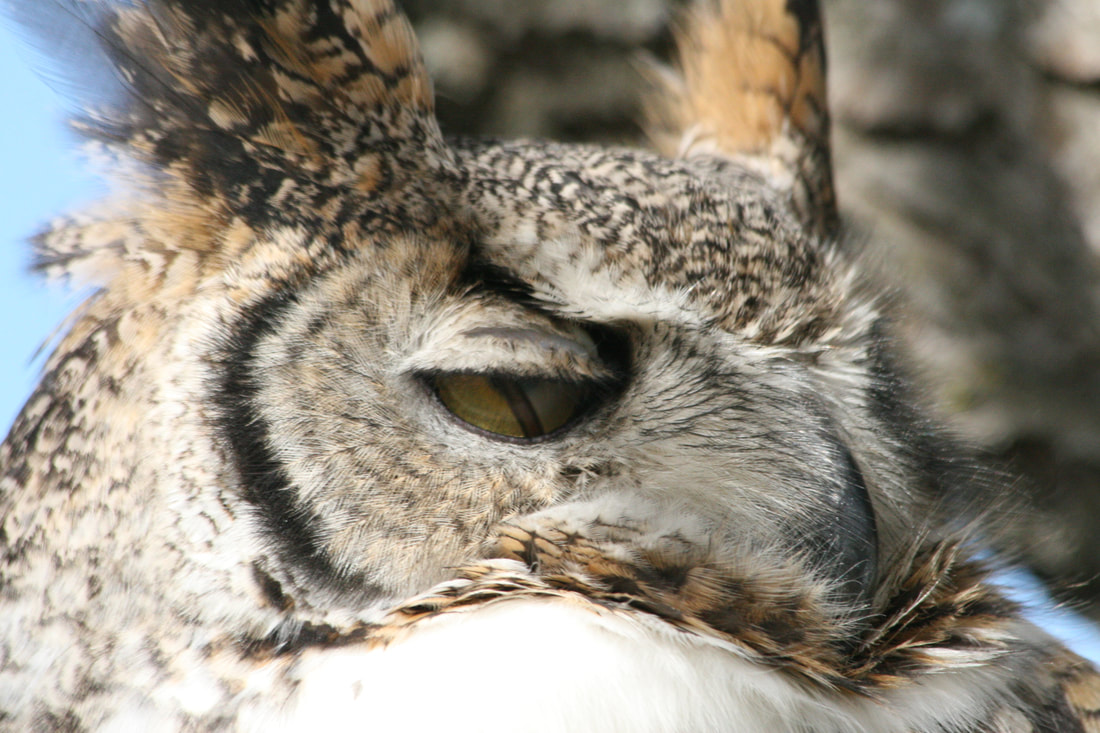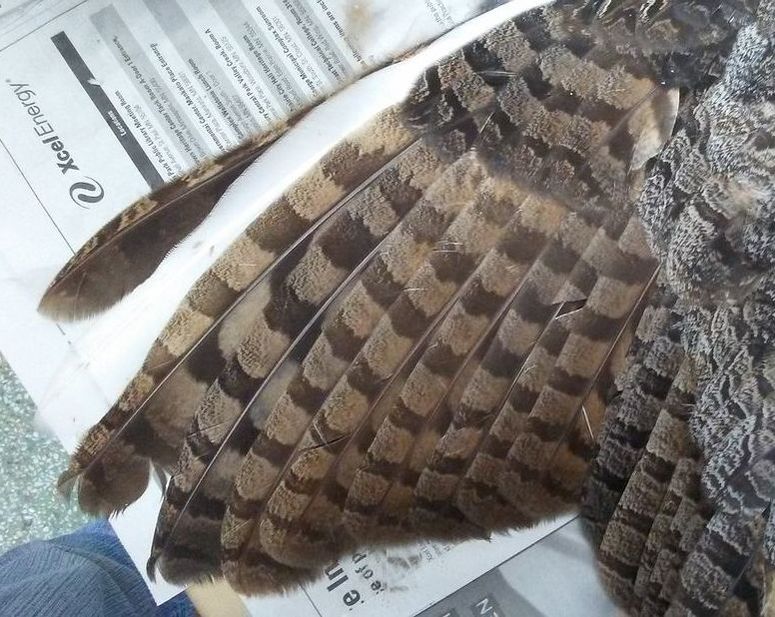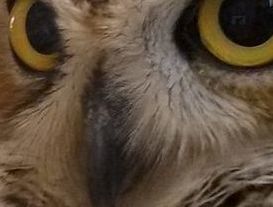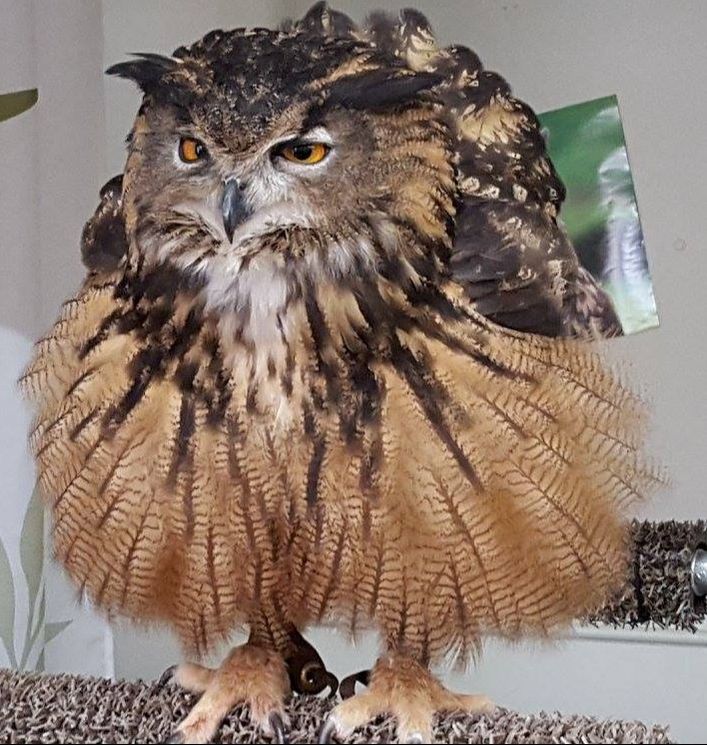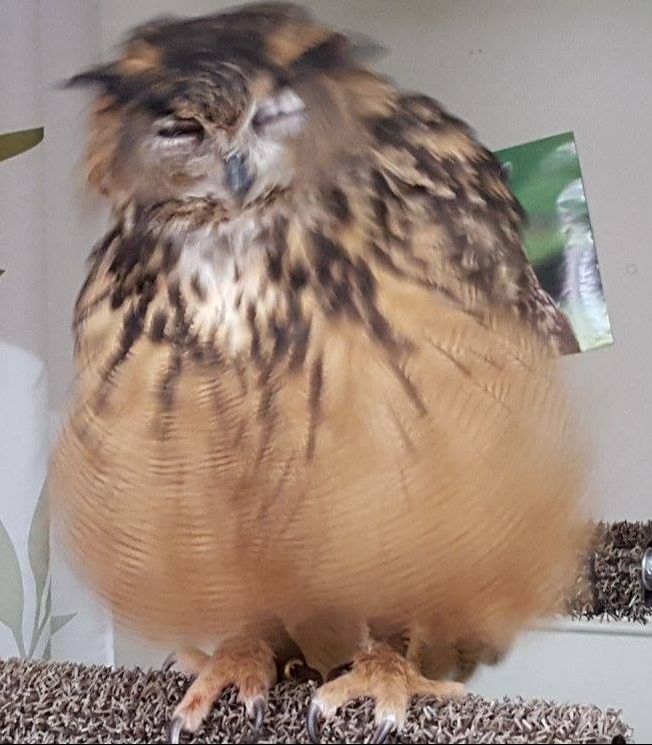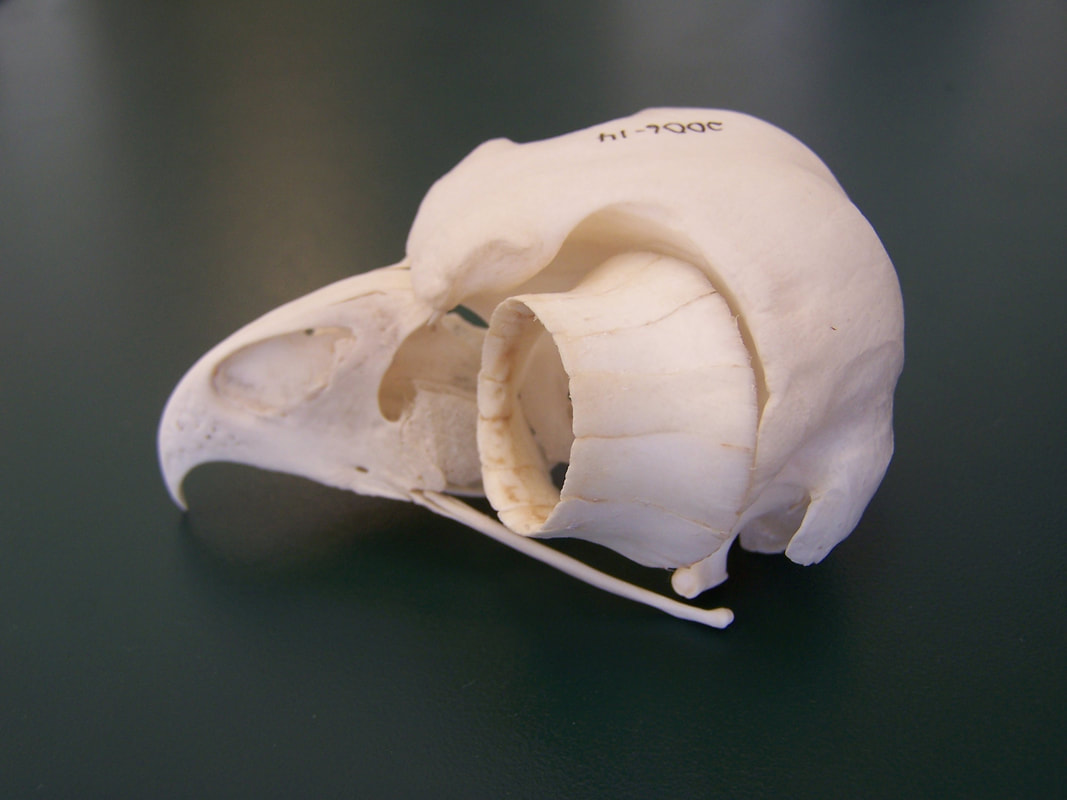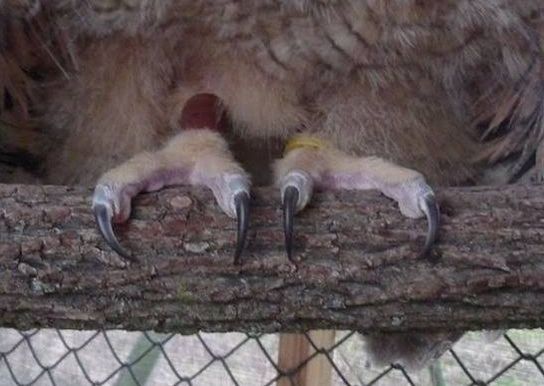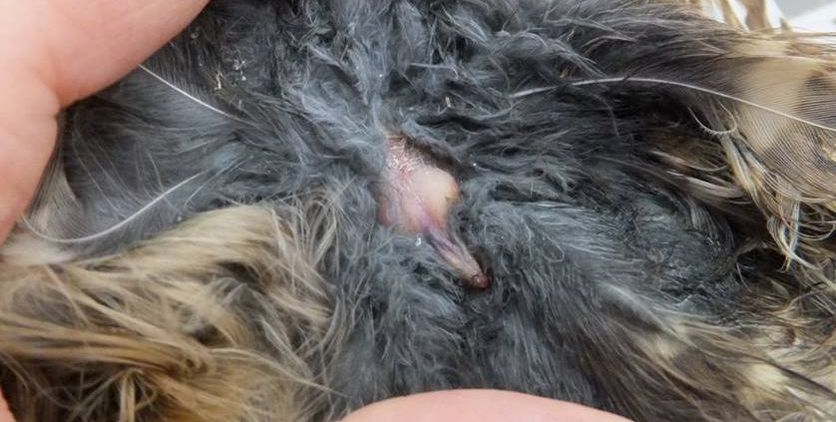Owl Glossary
Bill is the official word for all bird "beaks." Beak is normally used to refer to a sharp or pointy bill (you wouldn't say a duck has a "beak" but you would say a robin has a beak.)
Branching happens just before owlets start learning to fly (fledging), and is when they start to move out from the nest and stand on adjacent branches.
Only female owls develop a brood patch. Many of the belly feathers fall out just before the eggs are laid creating this bare patch of skin to provide easy heat transfer to the eggs during incubation. Male owls do not develop a brood patch so are thought not to be capable of true incubation like in hawks, eagles, and falcons.
Brooding is not the same as incubation. Brooding is the act of keeping the chicks warm by covering them with feathers. Incubation refers to pressing the brood patch against eggs.
|
|
Casting a pellet or throwing up a pellet is normally done once a day by Great Horned Owls. The pellets come out of the mouth covered with mucous and they consist of the fur and bones from their previous meal. Other birds also cast pellets (hawks, eagles, falcons, kingfishers, crows, etc.), but owl pellets are different in that they contain bones (owls can't digest bones well).
|
A crop is a food storage pouch located before the stomach. It is found in diurnal birds of prey, but not in owls.
The cloaca (clo-AY-cah) or vent is the one and only "out door." It's where the poop, urates, eggs, sperm, and everything else comes out. Copulation is sometimes called the cloacal (clo-AY-call) kiss because the male has to wrap his tail around the female's so their cloacae (clo-AY-see, plural) can touch and the sperm can be transferred.
|
|
Copulation (cop-you-LAY-shun) or mating are correct terms for the transfer of sperm from the male to female, but "bonding" is not a proper term. It's OK to have fun and say "tea time," too, since it certainly sounds like that. Rusty lands on Iris' back to copulate and he is the one that emits the high-pitched squealing sound (a screaming chitter) which sounds like a tea kettle.
|
Crepuscular (cre-PUS-cyoo-ler) means most active at dawn and dusk. Great Horned Owls aren't strictly nocturnal (active at night); they are generally more crepuscular.
Feaking (FEE-king) is wiping the bill on a branch or perch after eating to get the food bits off the bill.
|
When feathers grow in, they develop and eventually emerge from a feather sheath. The sheaths eventually break up as the feathers emerge. The shafts of the feathers are filled with blood at this time to provide nutrition for the growing feathers. When feathers are primarily still in their sheaths they are called pin feathers.
|
Feather tracts are the places where feathers grow on a bird's body. Feathers do not grow everywhere on their bodies, leaving unfeathered areas called apteria.
|
|
Fledging is when young owlets are beginning to fly. It takes practice, so this process takes time and they are very vulnerable.
|
GHO is a common abbreviation for Great Horned Owl. The technical and proper scientific abbreviation is GHOW.
Gular (GOO-ler) fluttering or panting are the terms for when an owl opens its mouth and puffs its throat in and out to cool off when hot or stressed. Owls can't sweat to cool off.
Hacking is the term that describes releasing a raptor to the wild while still offering food. Our 2013 owlets were "soft hacked," which means we simply opened the door to the outside world and continued to provide food as long as they wanted to come back and mooch (which they didn't do).
|
Imprinting is the process of a bird developing its identity when its eyes are first focusing. Normally a bird imprints on its parents or siblings. If raised by humans, they imprint on humans, but retain their natural instincts. They use normal behaviors for their species, but directed toward humans most of the time. Some birds are soft imprints, that only kind-of think they are humans. The other extreme is sexual imprints who want to mate with humans (like Alice.) Rusty and Iris are not imprinted on humans.
|
Incubation is the act of keeping eggs warm enough for the embryos to develop into chicks. In Great Horned Owls incubation is only done by the females, as males do not develop brood patches.
|
Molting is the replacing of feathers each year. In owls, this happens in the spring through fall. In Great Horned and other large owls, not all of the wing feathers are replaced each year. It may take 3-4 years for all wing feathers to be replaced in a Great Horned Owl, although the tail feathers are normally all replaced every year.
|
Mute is the technical term for poop or pooping, but "poop" is a comfortable word for most people to use also. Slice or slicing refers to the poop or the act of pooping by raptors that squirt their poop way out behind them, like hawks and eagles. Falcons and owls poop essentially straight down and don't slice.
|
The nictitating (NICK-ti-tate-ing) membrane is also referred to as the third eyelid. It is a milky blue (in Great Horned Owls) translucent membrane that blinks separately from the regular eyelids. It protects and moistens the eye. You may see it when Iris is feeding the owlets or when the owls are eating.
|
Owlet is the term for a young owl. Owlets can be nestlings (young ones in the nest) or fledglings (ready to leave the nest or having recently left the nest and are learning to fly.) A juvenile is a young owl that hasn't reached adult plumage.
|
|
A pip is the first hole a hatching bird pokes in the shell of the egg.
|
|
|
Preening is the act of running the feathers through the bill to maintain them. Sometimes the bird will first get oil from its uropygial gland and smear the oil onto its feathers. The oil basically waterproofs the feathers, and when sunlight strikes the oil on the feathers, the oil is converted to Vitamin D, which the birds ingest the next time they preen.
|
|
Rictal bristles are modified feathers densely packed around the bill (beak). They look hair-like and function like mouse whiskers by being very sensitive to touch. When an owl is doing something close-up (like eating, feeding a chick, etc.), it closes its eyes (they are far-sighted and don't see well up close) and just goes by feel thanks to the rictal bristles.
|
|
Owls have sclerotic (sclair-OTT-ick) rings in their eyes like all birds, reptiles, and fish. This is a ring of bones that is inside the outer membrane of the eye. In owls the sclerotic rings are very pronounced, making the eyes somewhat tubular. The skulls of hawks and owls look very similar, but the pronounced sclerotic rings in owls make the eyes face forward and actually give shape to the face. If you look into the ear of an owl, you see the side of the eyeball and the sclerotic ring is just below the outer membrane covering the eye.
|
Secondary feathers are the feathers on the wing closest to the bird's body, and they attach to the ulna in the forearm of the bird. The number of secondaries varies by species, and the are numbered from S1 as the outermost secondary (next to P1) to the innermost secondary, next to the body.
